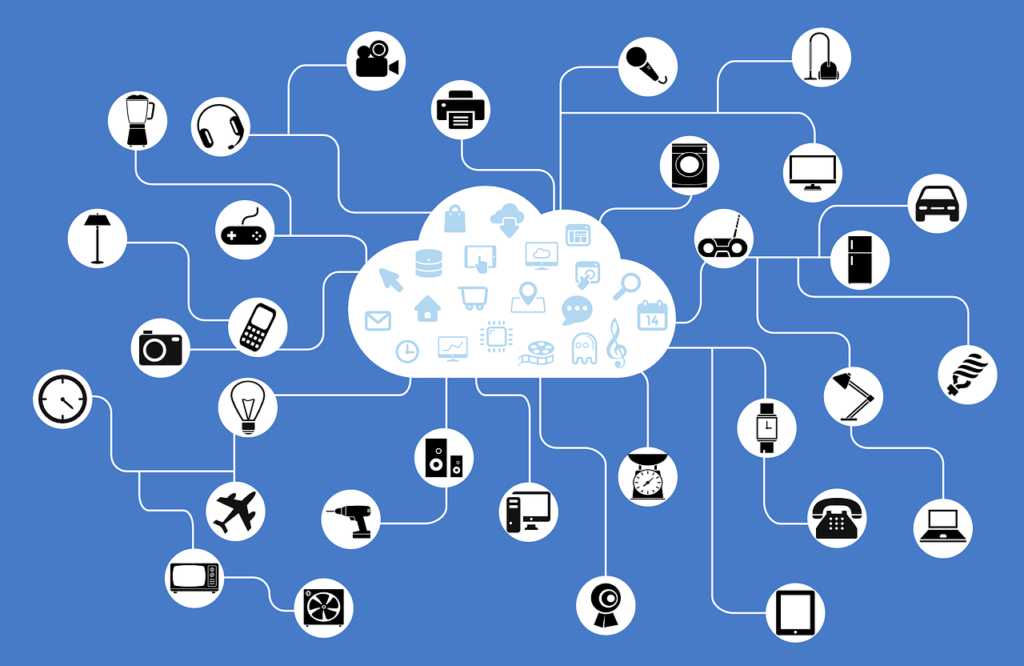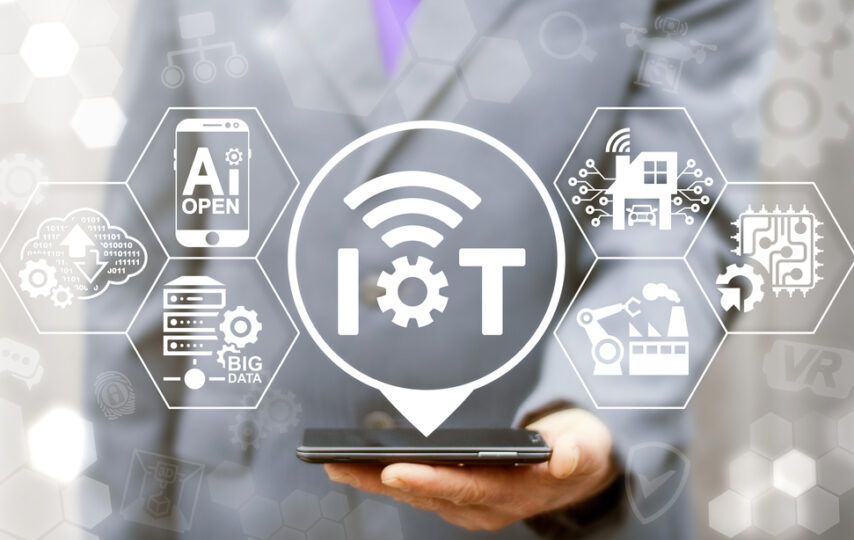The term “Internet of Things” (IoT) describes the global network of billions of gadgets that are now online and exchanging information. The widespread availability of low-cost computer processors and wireless networks has made it easy to incorporate everything from a medication to a plane into the IoT. To do so, you can Hire Dedicated Mobile App Developers. Connecting all these things and equipping them with sensors grants them digital intelligence, allowing them to exchange data in real-time without any intervention from a person.
Just what is the IoT, anyway?
“Internet of Things” describes commonplace items that can be controlled or provided information via a user’s computer or smartphone. Some common Internet of Things applications include:
- Connected home appliances (ovens, fridges, washers/dryers, coffee makers, slow cookers, etc.)
- Locks, doorbells, and security systems that use smart technology
- Smart house hubs (which regulate the temperature, the lighting, and other features of the home)
- Virtual helpers (like the ones offered by Amazon and Apple)
- Smart scales, activity trackers, and sleep monitors
- Plus, a whole lot more
Smart activewear, smart sporting shoes, and connected automobiles that provide information on anything from our proximity to other vehicles to the quickest way to avoid rush hour traffic are all examples of an emerging consumer trend in the Internet of Things.
Most users of smart IoT applications agree that they have benefited greatly from the information and convenience they provide.
Common Internet of Things Uses
IoT applications can be found in any industry and facet of life. Such apps’ widespread deployment and operation are made possible by their location on the cloud. Let’s have a look at some real-world Internet of Things applications and Hire Dedicated Mobile App Developers.
Let’s start in the kitchen, where cutting-edge IoT tools are all the rage, then move on to your home. Using your mobile device, you can keep tabs on and manage your home’s temperature, lighting, security system, and even the water from the hot and cold faucets. You can use Alexa or Siri to command your appliances hands-free when they have Apple HomeKit or Amazon HomeConnect compatibility.
- High-Tech Locks and Alarms
Starting with how the Internet of Things improves home security. You can protect your house against intruders, fire, and water damage with a combination of window and door contacts, glass break and motion detectors, heat, smoke, water detectors, security alarm pads, cameras, and smart doorbells.
In-home controllers connect to the Internet or battery-operated cellular communicators to send sensor readings and alarms to the cloud.
Any suspicious behavior in the house will trigger an alarm on your phone or computer app connected to the cloud. The app allows users to examine sensor data and video feeds to ascertain the current situation. The home security system can be remotely activated to prevent or allow entry. You may add a layer of protection to your house by creating unique codes for each permitted visitor and receiving notifications whenever they enter or exit your property.

- Temperature Control in a Smart Home
Day, night, holidays, weekends, and more can all be considered by a programmable thermostat to ensure a comfortable environment. With the advent of smart thermostats and sensors, new possibilities have opened up.
To begin with, the system can be linked to the cloud via Wi-Fi and managed from afar using a smartphone app. Users may check and control the temperature of their home from anywhere, be it a remote location, a car, or even the couch in front of the TV. Also, the system may respond to you or a family member taking a shower or working out by adjusting the humidity and temperature accordingly.
- In the Kitchen of a Smart Home
LG Electronics Internet Digital DIOS smart refrigerator, which debuted in 2000, was one of the first commercially accessible IoT products. Despite the failure of that web-enabled model, nearly every maker of kitchen appliances has responded with their version of a smart Internet of Things product.
Appliances like refrigerators, sinks, stoves (both gas and electric), ovens, toasters, coffee makers, pizza ovens, wine chillers, and dishwashers are now Wi-Fi enabled. In the laundry room, you’ll find Wi-Fi-controlled washing and dryer appliances, and in the bathroom, you’ll find a smart toilet.
Smart refrigerators allow you to manage multiple functions from your smartphone. Cameras on the interior let you watch perishables, while a digital display lets you look up recipes and make grocery lists.
- Intelligent Vehicles
In a few decades, autonomous vehicles will replace human drivers in everyday situations. However, Internet of Things (IoT) technology is already widely used in many aspects of traditional driving. The OnStar system from General Motors is a good example of safety service. In-vehicle sensors can record information about crashes and mechanical issues, which can then be sent to the cloud and a 24-hour service advisor.
You’ve probably seen commercials for it on TV. The consultant then converses with the motorist and takes appropriate action, such as calling for help from emergency or recovery agencies. The consultant also knows exactly where your car is because of GPS. If the issue is mechanical, the adviser can perform remote diagnostics on the vehicle before the responding mechanic arrives.
- Ingenious Toll Collection System
The use of ETC to collect tolls is the next Internet of Things (IoT) example vehicle. This function is frequently used on metropolitan bridges, tunnels, and roadways that charge motorists to pass through. The E-ZPass network, which operates electronic toll collection systems, spans 19 states from Maine to Florida and Minnesota to the west. That system is linked to Florida’s SunPass. Toll agencies utilize the FasTrak system down the state of California from San Francisco to San Diego.
You presumably already know how these setups function. Each smart toll booth you pass will read your transponder from your vehicle’s windshield. After the cloud verifies the transponder ID, the booth will display “Toll Paid,” You can go on your way. You can drive 50 miles per hour through an express lane because the transponder reading equipment is so precise.
- Wearables
The “Dick Tracy” vision of wearable communication and computer devices is already a reality, and it has many potential uses in fields like physical fitness, recreation, health, and medicine. Breathing rates, body temperature, heart rate and heart rate variability, glucose and blood oxygen levels, and many more can be measured by biometric sensors in watches, rings, and wristbands. These gadgets retain the raw data locally before sending it to the cloud via a cellular or Internet connection.
- Medical Care
In addition to IoT technology’s many indirect healthcare applications, many wearable gadgets have health and wellness uses. There have been reports that smartwatches can detect the beginnings of COVID-19 symptoms a full week before conventional nasal swab tests can.
There is even a term for it now: “Internet of Medical Things” (IOMT). Patient monitors, and tracking systems are the most widespread Internet of Things applications in healthcare. These can be used for diagnosis or monitoring a patient from a distance. Heart rate, temperature, blood pressure, and glucose levels are just some of the vitals that can be measured by monitoring equipment.
Conclusion
Innovations in the Internet of Things are helping us reach new heights. More money should be put into this research and other cutting-edge technological endeavors. To thrive in today’s globally interconnected world, businesses require tools like machine learning, artificial intelligence, and embedded technologies. To help you with this, you can Hire Dedicated Mobile App Developers. By making the most of this powerful technology, we can maximize the benefits of smart functionality, features, and productivity from the interconnected IoT ecosystems.








